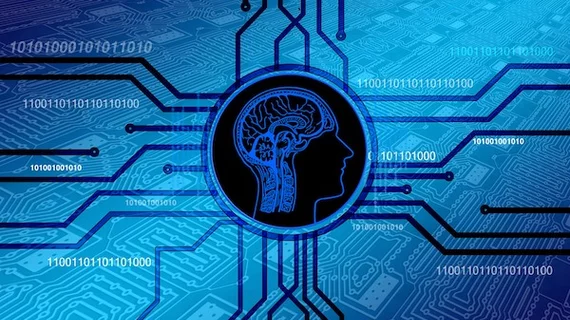Why radiologists need machine learning curriculum to improve safety, workflow efficiency
Radiologists who are eager to implement artificial intelligence (AI)-based machine learning technology into their daily workflows may be aware of its potentials and limitations, however many tend to lack a basic algorithmic understanding of the technology.
Without this knowledge, radiologists may be ill prepared to effectively interpret machine learning algorithm models and use AI safety and effectively overall, Monica J. Wood, MD, and colleagues explained in a recent editorial published in the Journal of the American College of Radiology.
“If radiologists are expected to utilize machine learning models safely and effectively for imaging interpretation, education for all levels of background and experience will be required, and a formalized machine learning curriculum targeted toward early career radiologists and trainees is urgently needed,” Wood et al. wrote.
Developing a machine learning curriculum
A machine learning curriculum should consist of all stages of model development, model translation and use in clinical practice, according to the researchers.
Specifically, this includes the data collection and annotation process, algorithm selection, model development and training, model validation and assessment, requirements for clinical translation, interpretation of performance metrics and model output and identification of modes of model failure.
“Just as radiologists must be able to leverage their knowledge of the image formation process to identify, interpret and account for imaging artifacts, the ability to critically evaluate various algorithms’ strengths and recognize their potential pitfalls will be essential to determine the validity and clinical applicability of their predictions,” the researchers wrote.
Machine learning is not intuitive
The need for machine learning curriculum is also “exacerbated by the unintuitive ways in which machine learning models can fail,” the researchers noted.
Because machine learning is dependent upon decision tree learning—a predictive modelling approach that gathers conclusions from observations or datasets—and may have hundreds of layers of information, a model may successfully identify a challenging image and then immediately afterward misdiagnose a simpler case.
“It is critical that radiologists learn to appropriately leverage a model’s output, critically evaluating all findings while never becoming complacent or blindly accepting these algorithmic predictions,” the team wrote.
Understanding machine learning models
To ensure machine learning algorithm predictions are valid and generalizable in patient care, radiologists should actively participate in model development.
This can be achieved by providing the clinical context, framing the imaging question, curating ground truth data sets, ensuring seamless deployment in reading rooms and continuously monitoring and validating algorithm performance, according to the researchers.
It may also be beneficial for radiologists to collaborate with data science experts, software engineers and referring clinicians to fully understand the potential of machine learning in radiology and be prepared to tackle the ethical, regulatory, legal, and economic challenges of AI.
Next steps
Radiology and medical imaging organizations should formulate a machine learning curriculum involving the leading radiologists and imaging scientists, develop curriculum for both trainees and attending physicians and must remain flexible and be continuously updated to reflect new knowledge gains and policy changes, the researchers explained.
Delivering machine learning curriculum through web based interactive sessions may be the most beneficial, the researchers noted, as radiology programs may have less well-versed faculty in the topic or lack resources to organize formal training opportunities.

